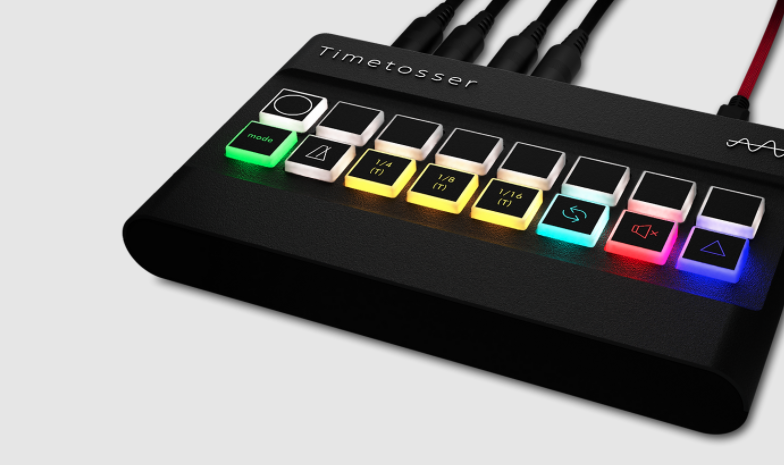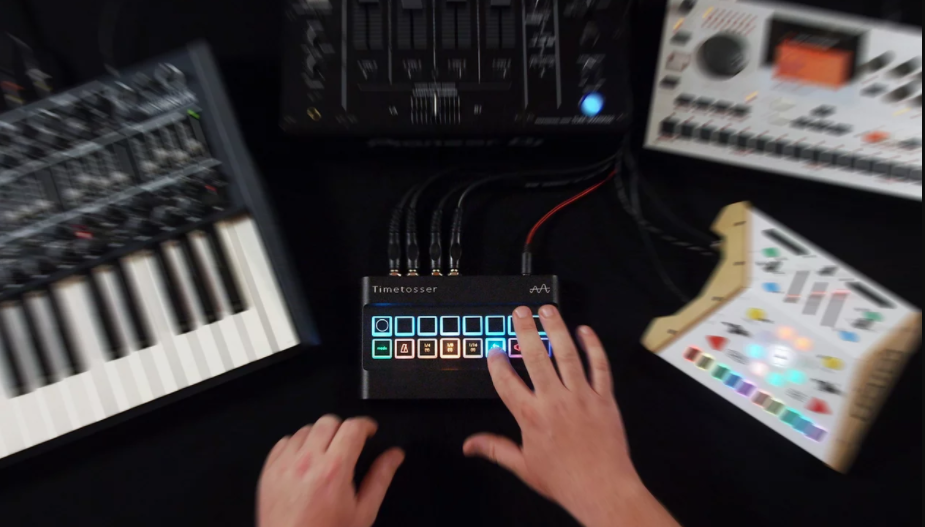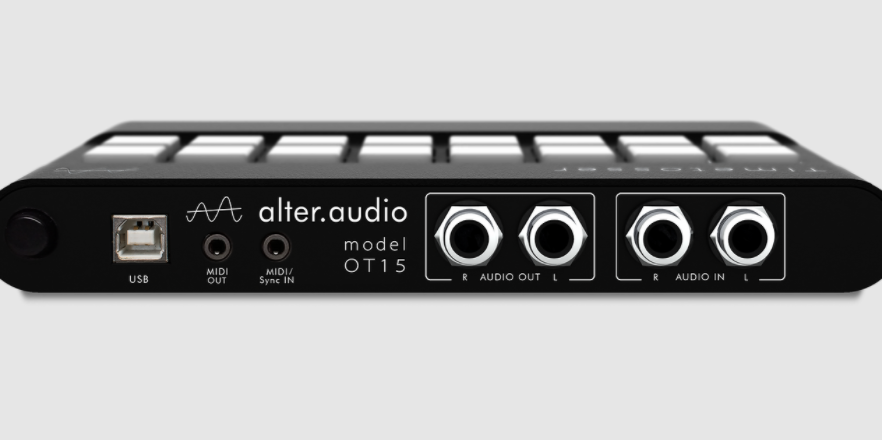This unique audio re-sequencing device allows you to manipulate music in real time. Greg Scarth finds out how it can work for producers as well as DJs.

Originally released via a Kickstarter campaign in 2020, Alter Audio’s Timetosser is a unique device. Described by the Dutch brand as a “standalone instrument for re-sequencing audio on the fly”, the Timetosser is probably best described as part sampler, part effects unit and part instrument. Aimed primarily at DJs, it allows you to manipulate audio in real time to create unique rearrangements of any audio signal.
The unit itself is a small, surprisingly lightweight box with rounded sides, giving it a nice feel in the hand which encourages you to pick it up to play it, although rubber pads on the base also mean you can use it as a desktop module. Connecting the device is a simple case of powering it via a USB cable, then connecting audio in and out via the stereo 1/4-inch sockets. Adapters are supplied to convert the 3.5 mm sockets to 5-pin DIN for traditional MIDI connections, while the sync in socket doubles as a connection for analogue clock signals. Although the Timetosser’s case is made of plastic and the unit doesn’t weigh much, it does feel strong and sturdy. A good quality travel case is included as standard, which is a nice touch considering this is a device explicitly designed to be taken out to venues for live performance use.

The Timetosser works by continuously sampling the audio input, then allowing you to jump backwards in the buffered audio, effectively shifting the playback position within the sequence of the music. For that to sound musical, staying in time with the signal is key, so the Timetosser synchronises to the audio tempo either via tap tempo, built-in automatic tempo detection or an optional MIDI clock signal or analogue gate. With a signal playing through the unit, the top row of buttons effectively allow you to choose from a range of delay times, each of which jumps the playback to a different point. The delay time itself is a multiple of the selected step length, chosen from 1/4, 1/8 or 1/6 notes or triplet versions of each. A shift key allows you to select an additional eight steps beyond the seven standard times, giving a total of 90 different positions in the buffer, each of which can be manipulated by playing back sequences, muting, reversing or simply triggering. Tapping the top left button, marked with a circle, allows you to jump back to the real-time signal at any point.

There’s a nice clicky mechanical action to the buttons themselves, which are made of hard plastic with a few millimetres of travel, giving them a feel more like an old-fashioned computer keyboard than the typical soft pads you’d find on a MIDI drum controller. All of the functions of the Timetosser are controlled via the 16 buttons on the top panel, so it’s quite quick and intuitive to get started. Results vary depending on the type of signal. From a DJing perspective, the Timetosser works best on more minimal music, or at least tracks without too many different elements. On sparse house and techno tracks with simple drum patterns and clearly defined bass and synth parts, it’s particularly effective at giving the impression of restructuring the track in real time, almost like a live remix. That’s not to say the Timetosser can’t work on busier tracks, but the effect is different; trying to manipulate vocal tracks in particular tends to lead down glitchier routes, which can also be good fun.

There’s a lot more depth to the Timetosser than might be initially obvious. For a start, there’s an accompanying plugin (available for Mac and PC), which allows you to control the device from within your DAW, making it part of your software setup. Another interesting option is to use the Timetosser as a MIDI clock source to synchronise a DAW or MIDI hardware with whatever audio signal you feed into it. The potential to use this feature as part of a DJ setup is obvious, allowing you to analyse whatever track you’re playing through your DJ mixer, then trigger other elements – drum machines, samplers, synths and so on – in sync with the music no matter where the tempo of your mix takes you. That’s not to mention the obvious studio applications for the Timetosser, which we’re surprised Alter Audio don’t play up a bit more: whether you want to tweak synth parts, glitch your drums or just mess around with loops in order to generate ideas, the device works just as well in the studio as it does in a live setting.
The Timetosser falls into a grey area between DJ and studio gear, effects and instruments, samplers and drum pads. At £325, it’s reasonably priced for a boutique product which opens up a lot of creative options. The effect is quite distinctive and won’t necessarily suit every style of music or approach to DJing, but it’s a unique solution for those who want the ability to get hands-on and mess with the fabric of time.
Greg Scarth
More info/buy